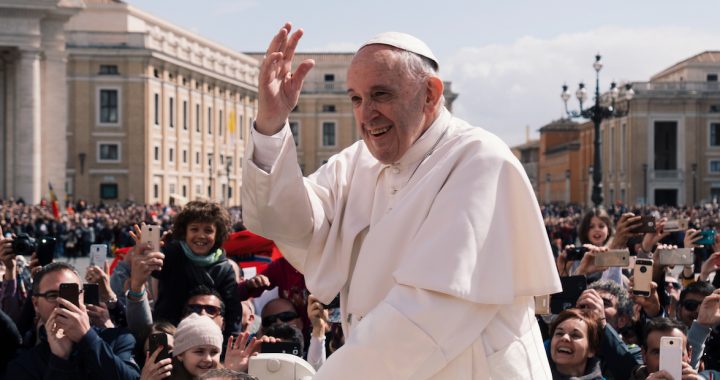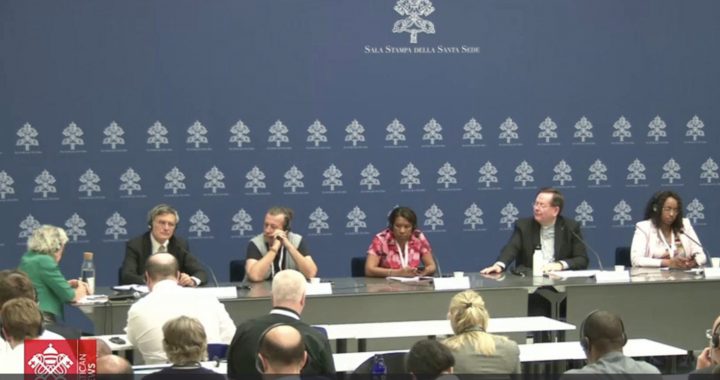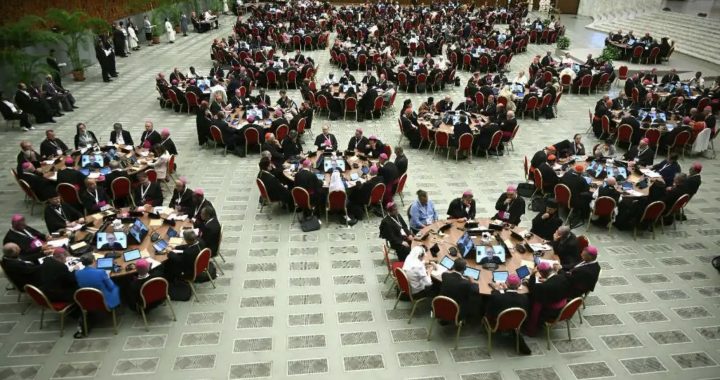In Apostolic Letter, Pope Francis takes us to the heart of the Eucharist in the Mass
If you translate the title of Pope Francis’ latest Apostolic Letter, Desiderio Desideravi, it reads “With desire I have desired”. The significance of a repetitive word may not be apparent to the English reader.
But in Latin, as in some Asian languages such as Chinese, Japanese and even Malay-Indonesian, it captures the essence of what it means. Desiderio Desideravi is taken from the Church’s Latin Vulgate of Luke 22:15, “et ait illis desiderio desideravi hoc pascha manducare vobiscum antequam patiar.” In English it is, “And he said to them: With desire I have desired to eat this pasch with you, before I suffer”.
To emphasise its meaning, the bibles of most Catholic dioceses around the world translate it as “I have ardently longed” (New Jerusalem Bible) or “I have eagerly desired” (New American Bible).
So, “With desire I have desired” can also be understood as a “passionate desire”.
It recalls the overwhelmingly successful movie, “Passion of the Christ”. Yup, that Mel Gibson movie. Not that he is a big fan of Pope Francis, as he has been stirring up discontent against the Holy Father’s motu proprio, Traditionis Custodes, that restricts celebration of the Traditional Latin Mass.
Since it was released in July 2021, there has been much unhappiness among TLM followers. They accused the Pope of being a heretic for tampering with the “Mass of the Ages”, among other things. This is the underlying reason why the Holy Father wrote Desiderio Desideravi, which is addressed to all Catholics — clergy, religious and lay.
Rubrics’ purpose in the Mass
With his usual depth, the Pope sees the outroar over the TLM as not just about the Latin language or Mass. It goes far deeper than that. In his Apostolic Letter, Pope Francis takes us back to the heart of what the Eucharist is about, beneath all the rubrics.
In essence, the Holy Father points to Christ’s two great commandments: The first and greatest is “Love the Lord your God with all your heart and with all your soul and with all your mind”. And the second, “Love your neighbour as yourself”.
Both were not meant to supplant or justify the 10 Commandments (or ten thousand, as the Pharisees would have it), but to indicate what the entire Law was supposed to achieve. Christ did that because the Pharisees had reduced the Law to burdensome, hard-to-follow rules.
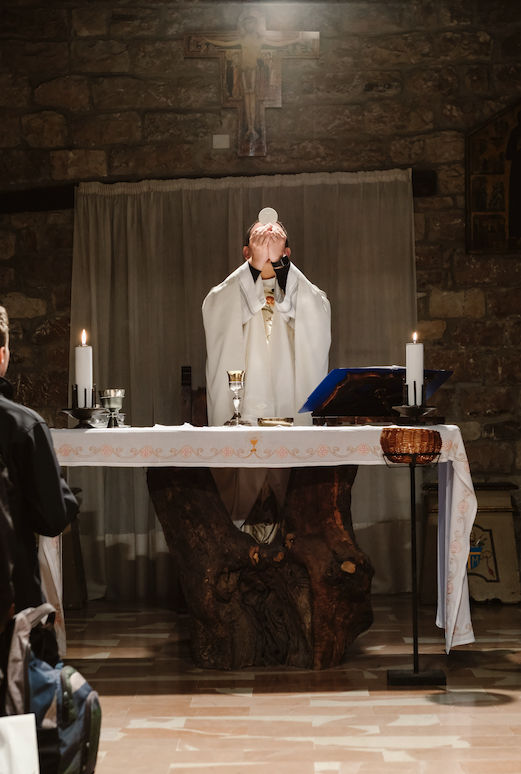
This is exactly what Traditionis Custodes’ opponents have done. They are obsessed with rubrics to the point of forgetting why they are there. In Desiderio Desideravi, Pope Francis reminds us of the role they perform in the primary reason why the Eucharist exists.
The rubrics guarantee the beauty of the Lord’s Last Supper in the Mass: that it performs all its purposes. This is because the Eucharist is full of symbolic language, as it is based on the Passover, which is replete with symbolism.
When Christ said, “Do this in memory of me”, the “this” didn’t simply refer to the acts of breaking bread and sharing wine. It refers to the entire Passover celebration. This is why we call Christ the “Passover Lamb”.
In Desiderio Desideravi, Pope Francis explains how Christ coopted the Passover symbolism for Himself.
The first element is a celebration of God delivering the Jews from Egypt. In the Last Supper, Christ elevates the symbolism to God delivering all of mankind from the clutches of the Devil. Pope Francis highlights that the Eucharist is meant to be for “every man from every tribe, every nation” (Rev 5:9, cited in Desiderio Desideravi, Para 4).
In the original Passover, the Matzah bread is broken to denote the parting of the Red Sea in Exodus. As Pope Francis narrates, the Eucharist has replaced this with the breaking of Christ’s Body and Blood on the cross in cavalry.
And all of this is connected by the desire of Christ to be God-with-Us. As the Pope explains, the core of the Good News is that Christ desires to share this Last Supper with every person in the world due to the intensity of God’s love for us. In this sense, the Eucharistic celebration is the embodiment and the manifestation of Christ, “more than just a representation” (DD, Para 9).
The Old and New Creation link
The Church, as an assembly, is part of this ongoing Supper until Christ’s Second Coming. Our participation in this unfolding of God’s love begins when we are baptised and inducted into the Body of Christ. Pope Francis shares that water in the baptismal rite is a symbol of life and rejuvenation all the way from Genesis, where the Spirit of God hovered over the waters of formless creation.
And since Jesus is also the Water of Life, the baptismal font is the Christian’s first experience of the same Paschal Mystery of the Last Supper. At the Eucharist, we are plunged into the depths of God’s love just as we are plunged into water at baptism. What is common to both is the experience of being totally immersed in something. Because since God gave his full passion and dedication to us, we are obliged to return the same.
In the event of the Passion, the Church bursts forth from Christ’s side on the Cross, just as Eve bursts forth from the side of Adam in Genesis. Here, Pope Francis applies the famous metaphor of the Church as bride of Christ in a fresh way. Although, as Christians, we are nominally familiar with regards to Eve as Adam’s bride, but we don’t quite automatically make that link on the lance that pierced Christ’s Body.
There were no bridal salons in Eden, after all! Nonetheless, Pope Francis use of this reminds us of the eschatological link between the old creation in Genesis and the New Creation made by Jesus in the Gospel.
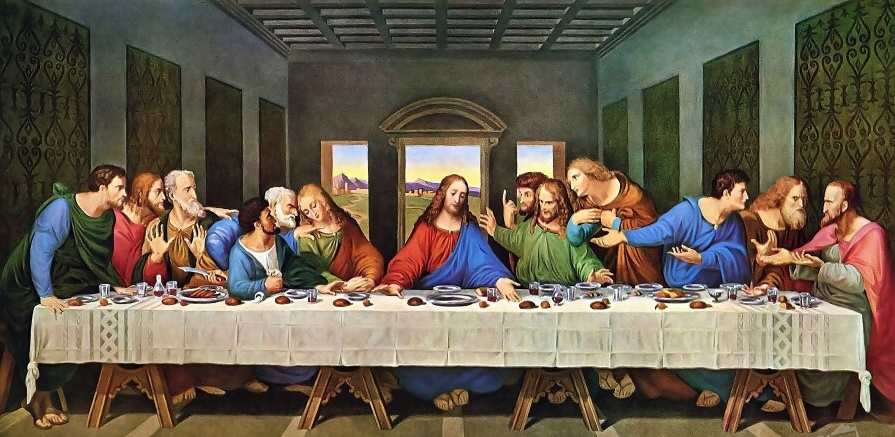
With this understanding at the core, we can approach the Eucharist from a proper perspective. The Eucharist must demonstrate the transcendent beauty of the Last Supper and provide for the participation of all members of Christ’s Mystical Body.
Although the Real Presence is real, the other elements of the ritual are also symbolic, bearing the transformed symbolism explained earlier in this article. Even the bread and wine are, in a certain sense, symbols. Although they are the true Body and Blood of Christ in the Eucharist, they are also symbols of the entire Body of Christ, the Church.
Liturgy is where God is with us
Returning to the Apostolic Letter, the focus is on Christ, not on any individual Christian. The Liturgy, as an Event, is a free gift from Christ. It comes from God to man. It is not a performance of man for God. At the same time, it is a gathering. The physical bread that is broken as the Body of Christ is united again in the Mystical Body of Christ, which is that all believers are gathered to worship Him as one Body.
Pope Francis emphasises to us that the Liturgy is about the group, and not about individuals. If we forget this, then we fall into a Gnostic subjectivism, which is one of the results of secular post-modernism, with its focus on subjective feeling. Or else, we fall into a salvation-by-works neo-Pelagianism, where we believe a specific form of prayer achieves salvation.
In a sense, then, the Liturgy is neither made-for-us or made-for-God, but is an event where God is with Us as Jesus was with His disciples at the Last Supper.
The latter is the core problem with the opponents of Traditiones Custodes. They have focused too excessively on specific rubrics, such as the priest facing the altar instead of the people. In doing so, they have missed the spirit of the rubrics. Although Pope Francis does not make any allusions here, this is precisely the spirit of the Pharisees who chastised Christ for healing people on the Sabbath. It was for such that Christ provided the Two Great Commandments.
The key part of the Pope’s reflection is found in paragraph 31, where he comments that the point of the liturgical reform at the Second Vatican Council was to enable the Liturgy to allow Christians to “better grow in our capacity to fully live the liturgical action”.
With this in mind, the Church can consider how to help priests to properly understand what the Liturgy entails, which attains its perfection when it fully reveals the glory of God to all present. The rubrics are there to ensure perfection, so they cannot be improvised. And yet they are not totally irreformable, because liturgy is an art with its own intrinsic beauty. There is flow and pattern in the liturgy and all its various ritual gestures. This is the Art of Celebration, or Ars Celebrandi.
The rubrics are there to provide norms, just as when a professional artist trains his protégé in drawing forms and filling in colour.
This finally brings us to the position of the celebrant, who takes on Persona Christi at the liturgical celebration. The presiding role of the celebrant is itself a symbol of Christ’s presence at the Last Supper. And the rubrics are there to guide the priest on embodying this presence in the celebration, since this presence is the “highest norm” (DD, Para 57).
What we get ultimately is a unique channel of grace directly from Heaven to the entire body of Christ, where the celebrant – priest or bishop – is not the mediator of Lord Jesus, but His instrument or sign instead. And, in particular, he is the sign of God’s fathomless love for us.
Main Image: Unsplash, Ashwin Vaswani

